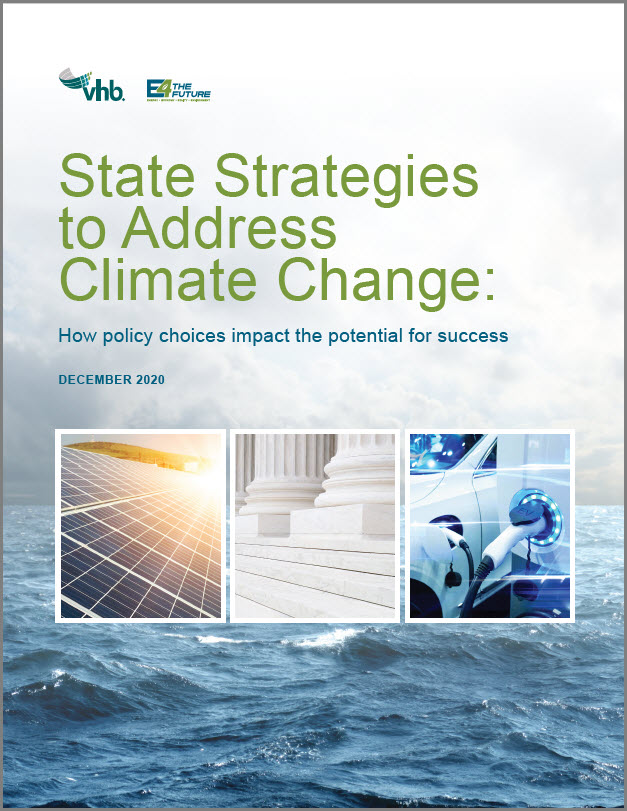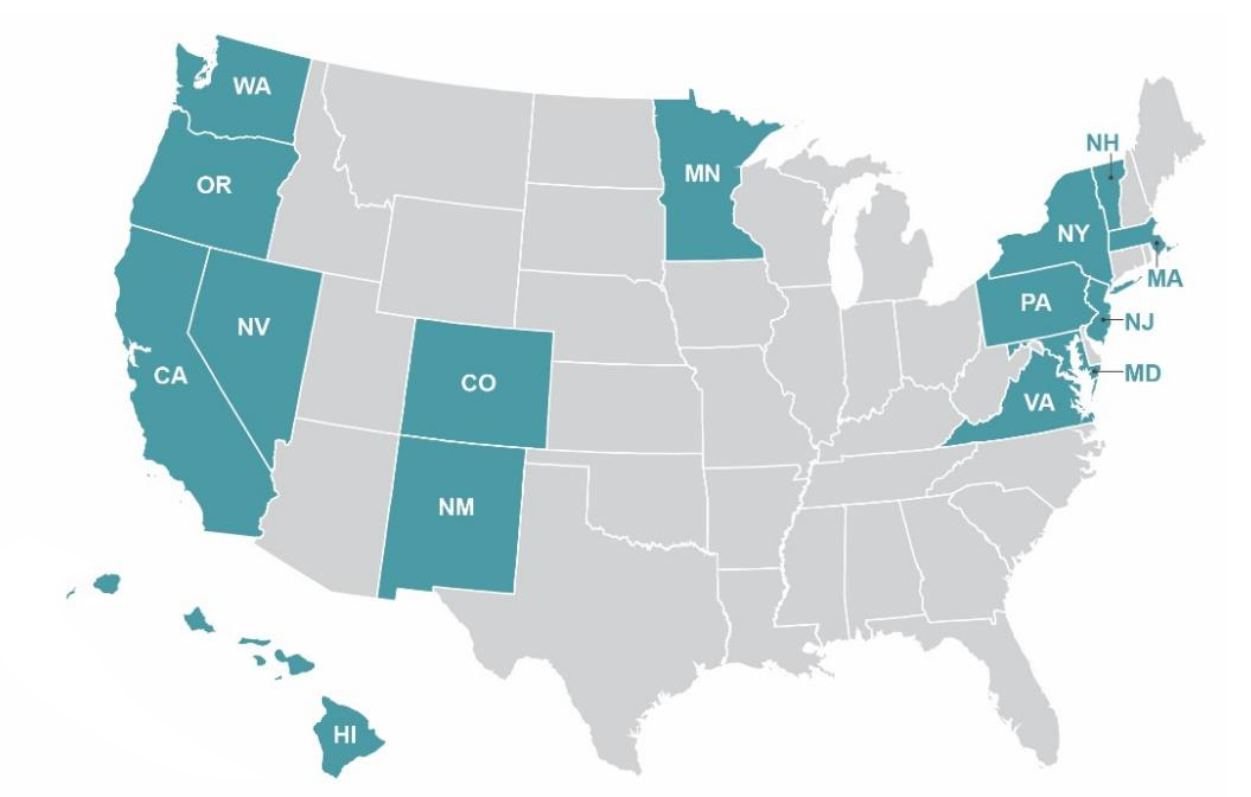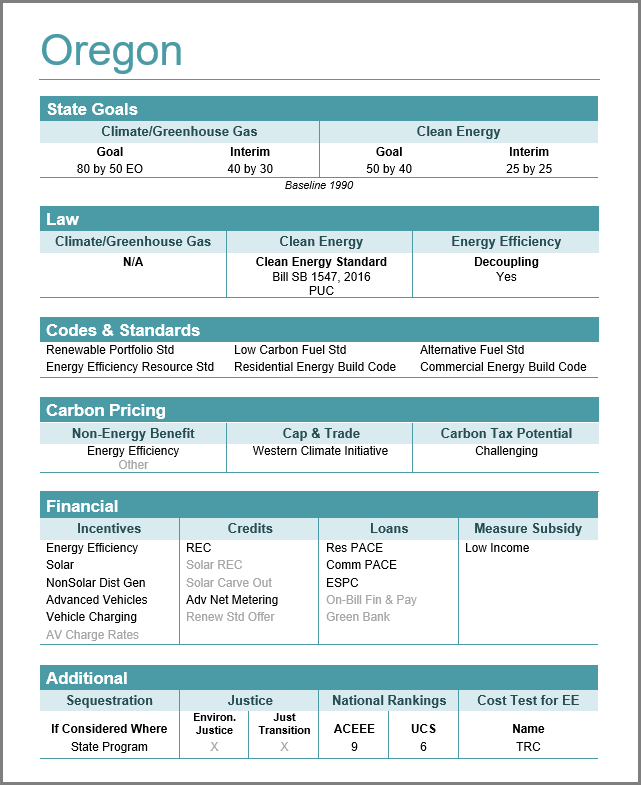by Steve Cowell
At this moment federal leadership changes are center stage, and may likely bode well for U.S. action on climate. Yet I want to focus beyond national news, calling your attention to a simple fact: States and cities need to remain at the forefront of implementing climate solutions.
Think of it as a “both/and” approach: Policy choices and implementation decisions by state officials as well as city leaders will help to move us forward, and can complement and execute positive federal legislation while administering programs. For meaningful U.S. progress on climate change, cooperation by and within states must be prioritized.
Large-scale regulatory design will be informed by existing innovative and successful state solutions. National leadership is crucial to solving the global climate challenge. But characteristics of each jurisdiction cannot be ignored. How will they combine practices to reduce emissions and clean the air?
No single strategy will be sufficient. Like it or not, we have to find ways to work together.

State Emissions Reduction Targets, from “Race to 100% Clean” interactive website, NRDC
My Experience in Massachusetts: Compromise is the Only Way
I have devoted countless hours to my home state’s energy policy and programs. After decades of working among dedicated teams, I am more convinced than ever that collaboration is the only way to make meaningful progress. I applaud compromises made by involved parties in order to move ahead, and to advance the public interest.
Policy approaches are a patchwork across the country. What works for Massachusetts, although we are seen as a leading state, would not necessarily work in other states.
How Are States Leading?
 A new resource demonstrates the breadth and depth of strategies needed. State Strategies to Address Climate Change: How Policy Choices Impact the Potential for Success — our recent report — offers a useful survey of policy approaches.
A new resource demonstrates the breadth and depth of strategies needed. State Strategies to Address Climate Change: How Policy Choices Impact the Potential for Success — our recent report — offers a useful survey of policy approaches.
States emphasize the adoption of clean energy policy as a “no-regrets” solution. Yet definitions of “100% clean” goals cover an array of options. (See more on this below.)
The wide-ranging differences among state specifics are essential to understand, especially for “opportunity states” yet to fully step up. Prior to our analysis written by Scott Johnstone of VHB, little attention had been systematically brought to the details. By seeing what is possible in the 15 states covered by the report, leaders in any state can better enable real progress.
State Strategies to Address Climate Change is dual-purpose. It provides an overview illustrating key complexities. It also shows what is feasible on climate, given unique state-level politics, which will serve to aid in expanding emission-reducing efforts.
Our report is a snapshot in time for high-level climate and clean energy policy, methods and tools employed by the roadmap designers. Typically examined as part of state plans: Energy efficiency, renewable generation, storage, grid reliability and the role of fossil gas.
I hope the report will help to accelerate important policy initiatives — at state, national, and city levels — that are aligned with environmental justice and a just transition.
As I’m sure you are aware, more cities and states are coming forward with aggressive carbon mitigation goals and setting new targets. I predict that this trend will continue as the clean energy transition gains momentum.


Ten of the 17 states* that have adopted “100% clean electricity” goals are covered in our report, which also details MD, MN, OR, PA and VT. The report’s appendix offers a quick comparison among:
Adoption of Law
Codes and Standards
Carbon Pricing
Financial Tools
Economics/Incentives
Sequestration
Environmental Justice
Roadmapping Strategies: A Range of Players
I want to give a shout-out to people diligently working on reducing polluting emissions. From government agencies to universities and NGOs, thousands of smart people are working hard on the climate emergency. State energy office staff are among the key people who turn their minds and hearts to crafting effective responses. So are utility regulators, and consumer and low-income advocates.
Governors are the most visible of state leaders, yet they do not stand alone. Depending on the state, weatherization program administrators, environmental agencies, climate councils, and transportation and housing officials play critical roles. The Weatherization Assistance Program is overseen at the federal level; also the U.S. Department of Energy offers assistance through its energy efficiency office and national lab work, such as with its State and Local Planning for Energy (SLOPE) Platform.
And regions are key players, too. Utilities, RTOs/ISOs, businesses and corporations are essential to collaborate on the market transformation needed for climate progress. Let’s take a “both/and” approach, with all hands on deck and abundant cooperation and good will!
New Research on State Pathways to Reach Goals, Targets
Announcements from around the country tout clean energy commitments. A few key examples are below. I applaud the authors and teams getting the word out about state and city leadership. However, note the differences in definitions of “100%”. State Strategies to Address Climate Change helps lay out the key points distinguishing the approaches, and discusses how much more research is needed.
- The Clean Energy States Alliance / 100% Clean Energy Collaborative – uses a broad definition:
Advancing Toward 100 Percent: State Policies, Programs, and Plans for Zero-Carbon Electricity (Dec. 2020)
–annotated bibliography of state-level plans, studies, and analyses
–interactive map / timeline of 100% Clean Energy States - Natural Resources Defense Council – Illustrates the nuances of state targets: Race to 100% Clean
- Sierra Club – Focus on 100% clean and renewable (eight states, plus cities and counties): Ready for 100
- Environment America – 100% Renewable campaign with interactive map showing pledges, goals and commitments
–Fact sheet: 100 Percent Renewable Energy for America describes the importance of efficiency, storage and electrification as it seeks to define “100%” - The Brookings Institution – Focus on cities: Pledges and Progress: steps toward greenhouse gas emissions reductions in the 100 largest cities across the U.S.
- Other: U.S. Climate Alliance and U.S. Mayors
Notable State Plans
Although there are more, I want to leave you with encouraging new plans from state governors that address climate change mitigation directly.
Commonwealth of Massachusetts: Baker-Polito Administration Releases Roadmap to Achieve Net Zero Emissions by 2050 (Dec. 2020)
Washington State: Inslee announces bold climate package for 2021–2023 biennium (Dec. 2020)
Maine: Maine Won’t Wait four-year plan (Dec. 2020)
Massachusetts and Washington are covered in State Strategies to Address Climate Change. I encourage you to familiarize yourself with the carefully chosen materials linked here.
Energy Efficiency: A Key Policy Component
Lastly, I want to point you to a resource my team has developed, building upon work by Synapse Energy Economics. Remember that ramped-up efficiency is widely recognized globally as essential to decarbonization.
The Database of Screening Practices (DSP), provides information regarding state cost-effectiveness screening practices for ratepayer funded electric and natural gas energy efficiency programs. States can use the DSP to learn about other states’ practices, and to readily access and better understand policies, processes, and studies that support assumptions (and underlying methodologies) used by states in their benefit-cost analyses (BCA).
As we get under way in 2021, let’s keep the momentum building!
–Steve Cowell is President of E4TheFuture
*See news about a report from Clean Energy States Alliance, Dec. 2020. The District of Columbia and Puerto Rico also set goals to reach 100% emissions-free electric power by 2050.
Photo: Carol It’s-Always-Spring-or-Summer-Somewhere Harley
